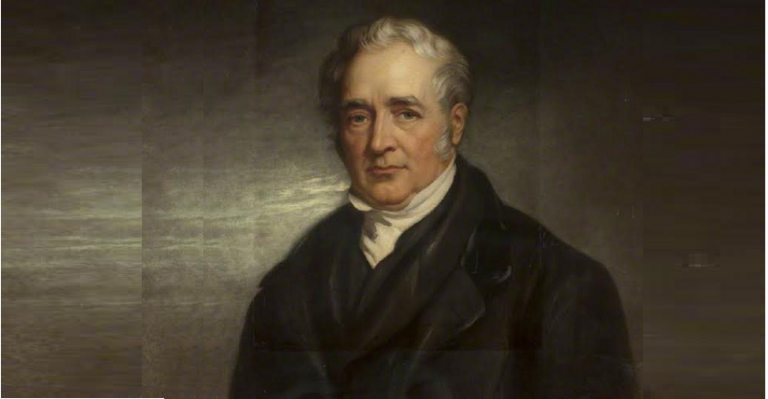Who Really Invented the Railway?
Step back in time and discover the true story of the railway's creation

Source www.whatshotlondon.co.uk
Who Invented the Railway?
The Early Days of Transportation
Before trains became a popular mode of transportation, people had limited options for traveling long distances or transporting goods. They either had to walk, ride on horseback, or use a carriage. The rich and powerful had the luxury of traveling by sedan chairs, while goods were transported by carts or boats.
This system of transportation was not only time-consuming but also inefficient, as it was heavily dependent on the weather and road conditions. Thus, the need for a faster mode of transportation grew over time.
The Steam Engine Revolution
In the early 1800s, steam engines became a popular source of power for boats, revolutionizing transportation on the water. The steam engines were far more efficient than previous methods, enabling faster and more consistent travel.
Engineers began to experiment with using steam engines to power other vehicles, such as carts and carriages, but it wasn't until the technology was applied to trains that it truly took off.
George Stephenson: The Father of Railways
George Stephenson, an English engineer, is widely regarded as the inventor of the modern railway. Born in 1781, he had humble beginnings as a son of a miner. However, his passion for engineering led him to become one of the most important figures in the development of early railways.
Stephenson's breakthrough came in 1814 when he built the world's first steam locomotive, known as the Blücher. This locomotive was successful in hauling heavy loads of coal, which led to its adoption in various industries throughout England.
Stephenson went on to design and build numerous railways, most notably the Liverpool and Manchester Railway, which opened in 1830. It was the first intercity railway in the world, and Stephenson's design of the locomotives and infrastructure set the standard for railways that followed.
Stephenson's innovations didn't end there, as he went on to develop the 'Standard Gauge', which is still used as the standard width for railways today. He also developed a safety lamp for miners, which significantly reduced the number of accidents in the mines.
Conclusion
George Stephenson's contribution to the development of railways cannot be overstated. His innovations not only transformed transportation but also helped foster the growth of the industrial revolution. Today, millions of people worldwide rely on railways for transportation, and it all started with the vision and hard work of George Stephenson, the father of railways.
The Contributions of Other Inventors
While George Stephenson is often credited with inventing the railway, there were several other inventors who contributed greatly to the development of this transformative technology. Here are a few of the most notable names:
Isambard Kingdom Brunel
Isambard Kingdom Brunel was a British engineer who is best known for designing some of the most iconic railway structures in the world. He is credited with creating the Clifton Suspension Bridge, the Great Western Railway, and many other structures that are revered for their engineering excellence and aesthetic beauty.
Brunel was a true innovator who was always pushing the boundaries of what was possible. He designed the Great Western Railway with an unusually wide gauge, which allowed trains to travel faster and carry heavier loads. He also experimented with new materials and construction methods, which helped to make building railways more efficient and cost-effective.
In addition to his work on railways, Brunel also helped to design many other important structures, including tunnels, bridges, and steamships. His contributions to the field of engineering are still celebrated today, and he is widely considered to be one of the greatest engineers of the 19th century.
Eli Whitney
Eli Whitney is best known for inventing the cotton gin, a device that revolutionized the cotton industry in the southern United States. However, Whitney also had a major impact on the railway industry, thanks to his work on interchangeable parts.
Prior to Whitney's innovations, manufacturing was a slow, labor-intensive process. Each part had to be carefully crafted by hand, which was time-consuming and expensive. Whitney developed a machine that could manufacture interchangeable parts, which revolutionized the manufacturing process and allowed railways to be built more quickly and efficiently.
Whitney's work on interchangeable parts would go on to have a major impact on many other industries, including the automobile and aerospace sectors. His innovations helped to kickstart the Industrial Revolution and paved the way for many of the technological advances that we take for granted today.
John Stevens
John Stevens was an American inventor who built the first steam locomotive in the United States in 1825. He was also responsible for designing the first steam-powered ferry and played a key role in the development of the Erie Canal.
Stevens was a true visionary who recognized the potential of steam power early on. He was one of the first inventors to experiment with steam-powered transportation, and he quickly realized that this technology had the potential to revolutionize the world. His work on the steam locomotive helped to pave the way for the development of railways, which would go on to transform transportation and commerce around the globe.
Stevens' contributions to railway technology were critical in the early days of the industry, and his legacy can still be felt today.